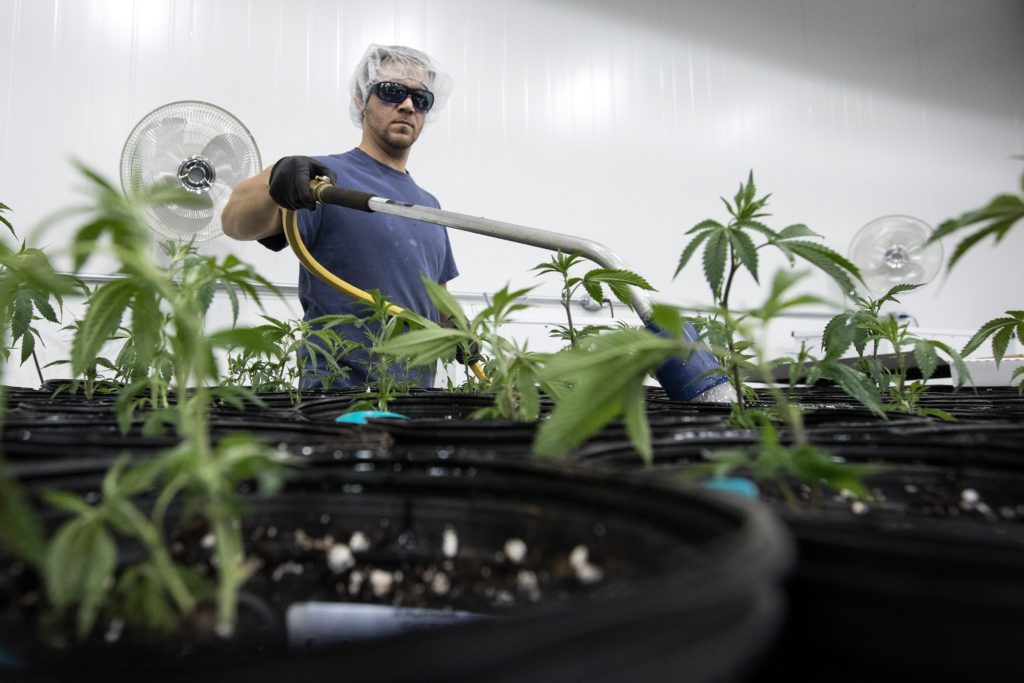One of law enforcement’s great frustrations with legal marijuana — and anti-legalizers’ perennial talking points — has been the absence of a reliable way of determining if someone has been driving while stoned.
A marijuana high (and therefore impairment) usually lasts two or three hours after a user smokes, and maybe a couple of hours longer if someone is using edibles.
The problem is that the traditional methods of testing for whether someone has been using marijuana — urine tests, hair tests and even blood tests — don’t account for how long THC has been in a drivers’ system (which can be for a month or more) and therefore don’t reveal if a driver was actually impaired when he or she was pulled over.
There is no marijuana breathalyzer that allows cops to administer the sort of instant roadside sobriety test typically used to measure impairment from alcohol.
That, however, may be about to change.
A couple of companies are developing breathalyzers for marijuana. One of them, Hound Labs, an Oakland, California-based start-up, has been field testing its device.
According to a list of answers to frequently asked questions posted on the company’s website, the Hound breathalyzer detects THC particles in a person’s breath in just minutes “and measures to very low levels — parts per trillion.”
“The reason this capability is so important is that THC stays in breath approximately two hours, which aligns with the actual window of impairment,” the company says.
The company also says its device can measure both smoked marijuana and edibles, a capability it calls “truly groundbreaking.”
“Up to now, we are aware of no instrument that could measure both types of use in breath,” it said.
What’s more, the device will be able to detect alcohol in addition to marijuana, which will make it easy for law enforcement to use.
Roadside sobriety testing is not the only market Hound Labs intends to pursue.
The company will also target employers wanting to use the device to measure whether workers are impaired on the job instead of whether employees may have smoked (legally) days or weeks earlier but are not impaired at work.
The company also intends to develop a consumer product that will let marijuana users measure their breath THC concentration.
“In stark contrast to alcohol,” the THC content of marijuana “is largely unregulated, so users generally cannot predict the amount of THC they have smoked,” the company says. “Imagine not knowing whether your 12-ounce drink is 4 percent alcohol (as in a beer) or 40 percent alcohol (as in a martini).
“We know now that it would be dangerous to consume an unknown amount of alcohol and simply guess whether you are too impaired to drive legally. Yet that is exactly what marijuana users must do because they can’t easily estimate their THC levels and are unable to accurately predict if they’re impaired,” the company says.
The THC content of most pot sold in Colorado is printed on the label, but the measure is not as accurate as the measure of alcohol content in booze; frequently the THC level is given as a spread — from 7 to 14 percent, for instance. It’s unlikely that THC content of smokable pot can be given more precisely any time soon, since it can vary dramatically from plant to plant and even bud to bud.
Hound Labs says its detection technology is proprietary and the website doesn’t contain a description of how it works.
However, another company developing a marijuana breathalyzer is somewhat more forthcoming. Cannabix Technologies of Vancouver, British Columbia, says it is developing a device “based upon high-field ion mobility and mass spectrometry.” The company has an “exclusive worldwide [patent] in the areas of breath analysis of controlled substances,” it says.
Just how reliable either company’s devices turn out remains to be seen. Devices that measure samples in parts-per-trillion in a roadside setting will have to prove they can be consistently accurate in difficult conditions, which may not be trivial.
Still, if an accurate way of measuring drivers’ pot impairment in near-real-time becomes available, it will deprive marijuana prohibitionists of one of their few remaining arguments against legalization. As they say at Anheuser-Busch, Dilly, Dilly.
credit:boulderweekly.com












